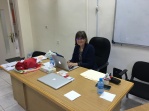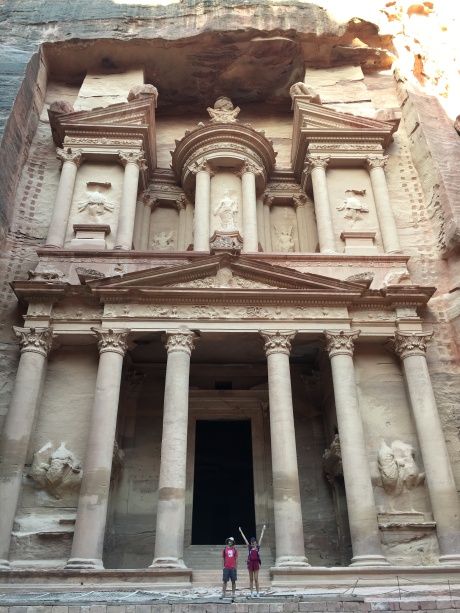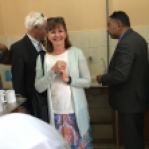Sister Burton’s, RS General President, Women’s General Conference address, “I was a Stranger” (Ensign, May 2016) was sentinel when considered in context of several addresses that followed in General Conference. Her reference to King Benjamin’s counsel to care for those in need…Comfort those that stand in need of comfort…[and] see that all things are done in wisdom and order (Mosiah 4:27)…none should run faster than they have strength (Mosiah 4;27) were adroitly applied to her underlying theme of the plight of the “refugee.” She then quoted President Eyring (Ensign Nov 2012, 124), “The Holy Ghost is sent to you and to those you care for…”
When I read the words of King Benjamin, I strive to liken them unto myself in my time, but sometimes I feel a little “Mormon-centric,” thinking his words were meant just for me or perhaps those of a similar kin and culture. I ask myself, “Do not his words apply to all of God’s children at this time?”
In the NA/ME area there are five humanitarian service couples and a proselyting missionary couple and members scattered between a few branches and stakes, a relatively small number compared to the entire population. Those members and missionaries, living worthily of their promised blessings, are entitled to the “Gift of the Holy Ghost” as the privilege of receiving direct revelation in keeping with their calling and responsibilities. This is a core principle in the Gospel and should be highly cherished.
The Bible Dictionary distinguishes between the “Gift” and the “Power” of the Holy Ghost (p 704). “The power [of the Holy Ghost] can come upon one before baptism and is the convincing witness that the gospel is true. It gives one a testimony of Jesus Christ and of his work and the work of his servants upon the earth.” (emphasis added) Surely the Lord is sending the Holy Ghost to inspire more people in the Middle East than the few baptized members of his church living here.
As we strive to build our own “Relationship of Trust” with the Lord, we should not overlook the opportunity to draw upon the counsel given by Mary R. Durham (Ensign, May 2016, 25), “…to help our children [and others] learn to recognize the Spirit.” As we help others build a relationship of trust with the Lord, so also does our relationship become strengthened.
We have been granted great opportunities to apply this principle of recent, which is reported in more detail in this and other reports. When a Catholic Priest, Father Haddad puts his hand over his heart and says, “When I was in Salt Lake attending your conference and going to BYU (He calls it BY-US), I felt something here in my heart.” OR when he says, “I feel inspired to help the LDS Church come out of obscurity in Jordan,” we gently try to help him understand the mission of the Holy Spirit in ways he had not conceived before. When a local restaurant owner tells us, “When you come to my restaurant, there is a special feeling here,” we carefully help him understand what is actually happening. When the Chief Chaplin of the US Navy, Rear Admiral Margaret Kibben tells us, she felt called to become a Chaplin in the military at an early age—she is open to the concept of being led by the Holy Spirit. In 3 Ne19:20-22 we learn that the Holy Ghost will be given to those who are chosen, to those that believe on His words and in Him. We see many good people around us acknowledging the presence of the Holy Ghost (in preparation for baptism and the constant companionship of the Holy Ghost).
We have come to appreciate more fully that it is through the Holy Ghost that we are able to build Relationships of Trust with the Lord…a blessing available to all worthy seekers of goodness. Members and non-members may be inspired. We try to respect and pay heed to what they have been led to do.
Relationship with your companion:
According to our assignment, (Eubank Feb. 2 & 7 e-mail) we are working to build relationships with the government, interfaith communities, educational institutions, civic ministering agencies and even within our own branch. We have also taken on a temporary assignment to assist with the Major Wheelchair Initiative during the transition between the other humanitarian couples in Jordan. The past few days we have been hosting Patriarch Chandler who has brought a wonderful spirit into the Center as he pronounced blessings on eight of our district members.
Explanations of how the temporal and ecclesiastical arms of the Church function have been informative. With our District membership being so small, we feel the challenge to reach out to gather the Ninety and Nine! Our whole herd is scattered about us. We hope someday our area can qualify to have a full-time Church director here on the ground, or at least a full-time consistent voice in Salt Lake, helping all to expand the Church’s involvement and influence in this vast region.
Probably few are functioning in Church callings that are matched to their degrees and training—but our temporal training has given us experience that makes us more effective than we might otherwise have been. Knowledge and experience are two of the few things we take with us into the next life. They are also a component of who we are and what we know, which helps us to help others in this life, as directed by the spirit.
Experience and education seem to work in harmony with, not exclusive of the purposes of the Lord. We strive to look through the windows and not into the mirrors around us. Know that we are always striving to better serve the Lord.
Working 24/7 with an eternal companion gives many opportunities to learn from each other, to teach each other and to grow together in ways directed by the Lord through our missionary experiences. The challenge of listening to the promptings of the Spirit and following counsel while at the same time using the tools gained in life is a growing experience to be cherished. We have great respect for each other, never feel or share harsh words and feel blessed to be in sync as we approach our assignments each day.
Relationship with the District/Branch:
We have had the opportunity to host David Chandler, Patriarch for the region, who gave patriarchal blessings to eight members in the District including 4 from the Arabic branch. His presence and demeanor set a spiritual tone for the entire time he was with us. While he did not claim to be a “Seer” the Sunday School lesson for that day was very appropriate, “A Seer [Patriarch]-Becometh a Great Benefit to His Fellow Beings.” The Center provided an ideal environment for the blessings to be given with little distraction from outside noise. The angels must have suppressed the construction workers around which we are surrounded. What an opportunity to build a relationship of trust with the Patriarch as he blessed the members of the District.
He sent this message upon his return home:
Dear Sister and Elder Phillips.
Words cannot express the tremendous gratitude I feel for you. Your incredible hospitality simply made my trip so nice — Thank you!
I so appreciate your kindness, conscientiousness, and service to me and all those who came to receive their blessings from our Father in Heaven. You helped make the atmosphere very conducive to inviting the Spirit, which was felt by all.
The church, the members and those not yet members in your mission are blessed because of your service. Thank you for serving Him so faithfully, and blessing my life in the process.
Gospel regards,
David Chandler




7 May: District Presidency meeting provides opportunities for information flow between the humanitarian/center couple and the District Presidency at the local level. There is a dynamic relationship between the District and LDS Charities with overlap in both the ecclesiastical as well as the temporal affairs of the church. Matters requiring further discussion and/or decision ascend the hierarchal chain via the ecclesiastical pathway or the humanitarian/temporal affairs pathway. Usually the potential for miscommunication is balanced by the benefit of two points of view. Sparing the details of each presidency meeting, it is crucial that communication remain open and flow freely at all levels, resulting in a relationship of trust and support.
One item of interest in the District Presidency is initiating the “Pathway” program in Amman designed to help especially the Arabic members to obtain an American college degree which would immensely enhance employability and demand higher wages. President Penrod tasked the Phillips to explore our options to bring this program to the District.
Relationship with Partners (Individuals/ Groups):
Religious: 8 May – granting Father Haddad as an Honorary Chaplin in the US Navy.
Father Haddad included Elder and Sister Phillips in an extraordinary dinner party at his home on Saturday. Meeting the first female Navy Chief of Chaplains was a momentous occasion and singular opportunity. Rear Admiral Margaret Kibben was delightful and sincere as she ceremoniously pronounced him an honorary US Navy Chaplin, with the help of Captain Steve Moses. Congratulations, and well deserved! What a great honor, Father. In addition to his other earned and honorary degrees and titles, we can now call him Chaplin Nabil.
We were also privileged to dine with Lieutenant James Ragain of the U.S. Navy. The company and entire evening was intimate, inspiring and delightful. Ekhlass personally prepared so many delicious dishes, we hardly could fit the many choices on our plates. The Haddad home was not only beautiful, but there was an inspiring spirit within its walls.
Sandi wrote to Nabil and Ekhlass,
“Your children and grandchildren are a credit to your parenting and were so welcoming at every turn. How lucky for us that even little 2-year old Nabil was a part of the festivities! He is as handsome as he is precocious.
“Henry Wooster, Deputy Chief of Mission for the Embassy of the USA was an inspiring table partner as he shared some of his background and experiences here in Jordan. We met him again just two evenings ago at Our Lady of Peace mass and inauguration of the sustainable farm garden supported by Pope Francis.
“You have an incredible network of political, religious and royal family associates and friends who revere your experience and influence. It seems that every event we attend you are chosen to be the keynote speaker from among hundreds, if not thousands, of attendees. What a privilege it has been to work with you over the winter months in distributing food, blankets and heaters to the weary and needy.
“Thank you for always supporting LDSC and praising us so easily and generously in front of your many Catholic, Muslim and protestant associates.


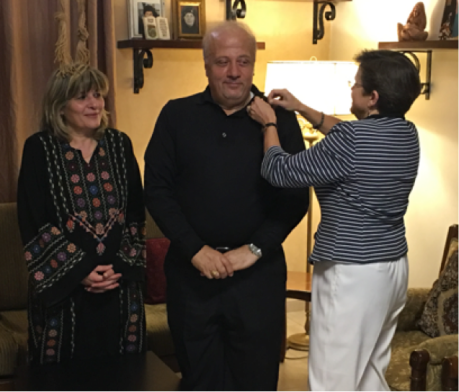
10 May: We were invited to return to the home of Father Haddad following his Navy honor. He was regaining his strength from his 3-week illness and hospitalization (probably Zika Virus from a mosquito bite) and more enthused about how he could assist LDSC in advancing the recognition of the LDS Church for the good they are doing in Jordan. The visit was a pleasant and relaxed meeting (no 2-year-old Nabil Jr present) and it was an opportunity to talk in visionary terms and strategic planning. He continues to amaze us with his dedication to a mission-driven effort to help bring the LDS Church out of obscurity. We told him our life would be consumed for the next two weeks while we attended to our wheelchair responsibilities but would prayerfully consider ideas he presented and meet with him again to continue to plan for the future.

Community:
12 May: Paid a visit to Raad Kilani to give a gift to their new daughter Joury. Lubna’s parents were there and were very pleased that some foreigners would make a hospitality visit to see their new granddaughter. We have become very close friends with the Kilani’s as he continues to serve LDSC as legal counsel in Jordan.

Educational:
9 Mar: American University of Madaba (AUM) Visit with faculty member Daniel Blomberg, and Dean Fayez Haddad, Dean of the Business School.

Figure 2016-5-9 (l to r) Asst Professor Daniel Blomberg, Elder Phillips, President Numayr’s Executive Assistant, and Dean Haddad
12 May: Jordan Educational Imitative – As a follow-up to our meeting with Feda Gharaibeh, Director, Humanitarian Relief Coordination Unit, MOPIC, we spent a delightful hour visiting with Nerine Nebulsi, CEO of the Jordan Educational Initiative at their offices in west Amman. Our objective was to explore ways in which Elder and Sister Phillips could be of assistance to the objectives of the initiative.
The program is focused on K thru 12 public school education. Their objective is to integrate digital technology into the learning environment to augment and accelerate the learning process. There is a team of 18 working under her direction. They obviously cannot reach all public schools so they have selected a few to experiment with different approaches of implementation in a “pilot study” format. The measured outcomes will help determine future direction.
We are not sure how we could tie LDSC programs into what they are doing but will continue to explore options that may be of interest to her. The obvious need is for greater financial support but we did not pursue that discussion until we had more time to explore what might be sustainable from an LDSC perspective.

Figure 2016-5-12 Elder Phillips in conversation with Nerine Nabulsi of the Jordan Educational Imitative.
Charitable Organization: Our Lady of Peace in Amman 12 May: We received an invitation from Sahan Madanat, Director of Our Lady of Peace, to attend the dedication of their Peace Garden by Patriarch Fouad Twal.
The Vatican donated $150,000 to Caritas Jordan to launch the project. The project will provide 15 Iraqi refugees with full-time work cultivating, producing and selling vegetables and oil. Another 200 Iraqi refugees will be given training in carpentry, agriculture and the food industry and an additional 500 will be given seasonal employment. We had the opportunity to meet Wael Suleiman, Director of Caritas Jordan.
The ceremonial Mass preceding the dedication was presided over by Latin Patriarch of Jerusalem Fouad Twal and Apostolic Nuncio to Jordan Archbishop Alberto Ortega Martin. This was a rather large gathering of notables and locals. When we arrived we were recognized and ushered into seating reserved for LDSC. This was a great honor and deep gesture of respect for our church, as hundreds of parishioners had standing room only. When the dedicatory speeches were over we were invited to join the procession of leaders out to the unveiling of the monument in the Garden. There was some time to interact and shake hands with many we have had previous contact.

Figure 2016-5-12 Our Lady of Peace Garden Dedication

Figure 2016-5-2 Zaid & Elder Phillips reviewing a professional question
Elder Phillips continues to build a relationship with Zaid as they review and ponder clinical scenarios that appeal to their common backgrounds. We continue to work with Elissa to get our proposal for wheelchairs for the Royal Hospital approved. This is one way LDS Charities can show appreciation to Zaid for his commitment to give of his time and talents to move the wheelchair training program forward at a reduced expense to LDSC.
9 May: In our continuing efforts to give support to Michael Thomas and his efforts to bring medical supplies into Jordan in November when his team of 25 Agricultural leaders come for a tour and learning, we made a trip to Madaba to find out why there had been no response to the e-mails he had sent to Drs. Al Shloul & Karadsheh, contacts he gained by conversing with Brent Strong. We initially searched out the eye-clinic where the retinopathy project had been conducted but when we found the clinic neither of the two Drs. were there. We were then directed to the Nadim Hospital to meet Dr. Karadsheh.
She is now the Director of the Hospital and Dr. Shloul has been transferred to Zarka…a constant challenge to building lasting relationships. The hospital has 120 beds and 20 emergency room beds. The facility is a full service hospital with all the standard medical specialties, a renal dialysis center, women’s clinic and a physical therapy department. This hospital was also part of the RHAS/LDSC retinal neuropathy study along with the ophthalmology previously mentioned. The Tolley’s had also worked with the hospital on one of their women’s health initiatives. So there has been plenty of LDSC footprints at the hospital but no coordination of efforts between humanitarian couples to date.
Dr. Karadsheh worked in the hospital out-patient clinic in 1996 then went to Russia in 1983 to study medicine (using English texts).
There was some discussion with Dr. Karadsheh and her Chief of the Medical Staff regarding what supplies and equipment would be best to bring and how it would be used. She has prepared a list to be sent to Michael Thomas.
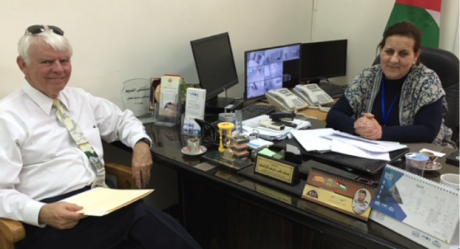
Figure 2016-5-9 Dr. Karadsheh, Director of Nadim Hospital in Madaba, with Dr. Phillips
Relationship with the NA/ME Desk:
Relationship with a Major Initiative – Wheelchair Training Project
11 May: The Cullimore’s arrived at the Ammon Airport to begin the Wheelchair Training program that will continue to the 23rd of May. There will be more on this experience in the following reports.

Figure 2016-5-11 Cullimores arrive in Amman, looking completely rested and happy, after 19 hours of traveling…amazing!
12 May: The training process involves a number of meetings to include a pre-training meeting to review what will actually take place in the training meetings. On the morning of the 12th we had the pre-training meeting with GUVS. We were greeted by their governing board and their president for introductions and discussion. In our brief 45-minute session, their president took seven phone calls and smoked six cigarettes.
After the preliminaries and the board dismissed themselves, we got down to a step-by-step discussion about what was going to occur in the actual training session to be held in Aqaba. Shatha Qteshat and Maysoon, our primary contact people with GUVS, are two very sweet and hardworking people who appear to hold the wheelchair program together at GUVS. There is a language challenge, however, so Max Abeda was brought in has a translator for LDSC.
The only misunderstanding that came out of the pre-training discussion was that the GUVS people were not planning to begin the first session in Aqaba until mid-afternoon on Monday. The actual plan was to use Monday morning and early afternoon to construct the wheelchairs and to allow trainees the experience of the assembly process. In fact, we had prepared an extensive tool kit for each participant to take home with them for future assembly events.
To remedy the situation, Shatha contacted those coming to Aqaba to see how many could come earlier, but most transportation arrangements were already set. We learned after arriving in Aqaba that the venue for our training session was already booked until mid-afternoon with another client so we could not start the assembly process any sooner even if people did arrive earlier. Flexibility and adaptations allowed us to remedy the situation.

Figure 2016-5-12 GUVS pre-training mtg. l-r: GUVS President, Vice President, Elder Cullimore, Max the translator

Figure 2016-5-12 GUVS pre-training mtg. (l-r) Zaid, Maysoon, Shatha
Neighborhood Activity: Road construction continues to make access to the Center challenging if not impossible at times. The building next door continues to take form but in its early stages of gestation it is hard to determine gender and stature.

Figure 2016-5-9 Road construction…laying a road base for eventual paving.

Figure 2016-5-10 Building next door






